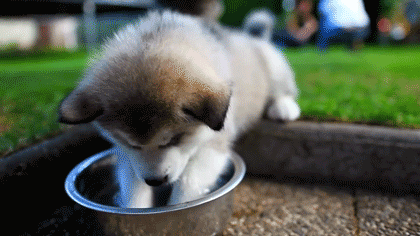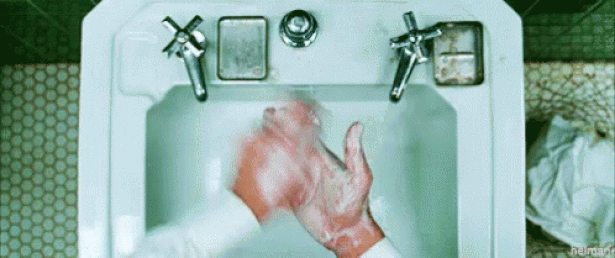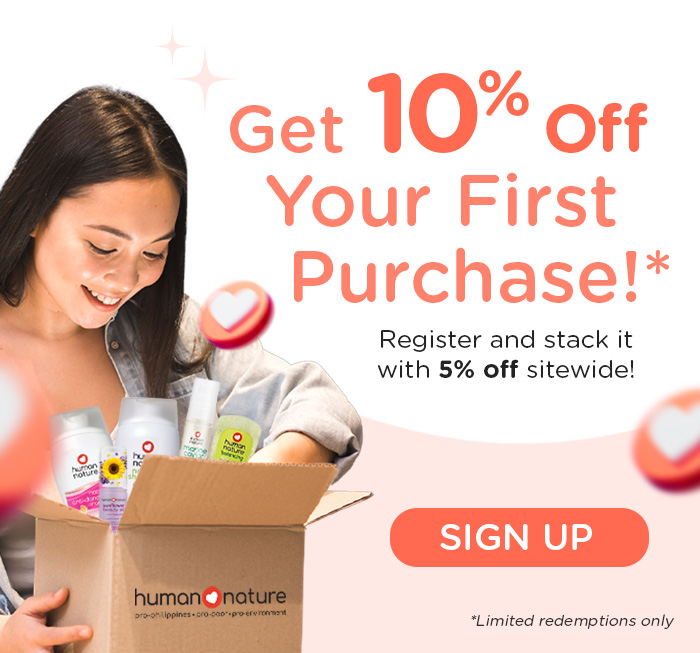Before eating, after holding money, before touching a doorknob, after using the toilet – we're always being reminded to use hand sanitizers, and with good reason! Our hands get the most contact with public surfaces AND our mouth, nose and near our eyes, the main gateways for germs to get into our system.
And really, the only way for us to significantly lower our risk of getting sick is through regular and thorough hand washing and sanitization. Scientific studies show that use of non-antibacterial soap plus hand hygiene education can reduce respiratory illnesses by 51%!
 (Source)
(Source)
But did you know that a common ingredient used in hand soaps and sanitizers has been classified as a human carcinogen? Next on our #ReadTheLabel series, we'll be talking about
triclosan, what years of research found out about it, and why you should totally skip the risk.
 (Source)
(Source)
Triclosan is a common ingredient used in hand sanitizers to reduce or prevent bacterial infection. But for decades, a number of environmental, academic and regulatory groups have voiced out their concern with using this ingredient in personal care products, especially with growing research linking it to possible health risks and negative impact on the environment.
In several laboratory studies conducted on animals,
triclosan has been linked to endocrine disruption, development of bacteria's resistance to antibiotics, and even development of certain tumors. Research also found that a significant amount of triclosan is absorbed and stays in the body. Considering that triclosan is tagged as an endocrine disrupting chemical, its potential impact to one's health is very concerning.
 (Source)
(Source)
Triclosan has also been found in waterways and agricultural fields, raising another concern that its presence in certain sources of drinking water and crops can expose us to higher concentrations of it.
Triclosan has been banned in the European Union since 2015 and by the US FDA since 2016. Some local department stores have also started sweeping their shelves of products containing triclosan.
But what takes the cake is that
triclosan (after years of including it in hand soaps and sanitizers) does not kill more bacteria than good old soap and water!
 (Source)
(Source)
Because of these findings, plus the demand from groups and shoppers alike to stop the use of the ingredient,
big personal care brands have started to remove triclosan from their products and are aiming to remove it totally from any of their formulations in the coming years.
So if you have your handy-dandy hand sanitizer with you, take it out right now and check the ingredients list quick. If you see any triclosan included, better to skip the risk and look for a new one —
a hand sanitizer that's formulated with safer natural ingredients with ethyl alcohol and essential oils. Same goes for your hand soap at home! Look for ingredients that are instead
derived from natural resources like coconut, plant oils and rice bran.
And that's for today's #ReadTheLabel know-how!
Don't forget to share the lifesaving knowledge!
References:
- "Is hand sanitizer toxic?" CNN.com. http://edition.cnn.com/2013/10/16/health/hand-sanitizer-toxic-upwave/index.html
- "Triclosan-containing antibacterial soaps neither safe nor effective:" ewg.com. http://www.ewg.org/testimony-official-correspondence/triclosan-containing-antibacterial-soaps-neither-safe-nor#.WdxBcVuCzIU
- Aiello, A.E., "Consumer antibacterial soaps: effective or just risky?" Clin Infect Dis. 2007 Sep 1;45 Suppl 2:S137-47.https://www.ncbi.nlm.nih.gov/pubmed/17683018
- Allison E. Aiello, PhD, et al, "Effect of Hand Hygiene on Infectious Disease Risk in the Community Setting: A Meta-Analysis," https://www.ncbi.nlm.nih.gov/pmc/articles/PMC2446461/
- Kampf, Günter and Axel Kramer, "Epidemiologic Background of Hand Hygiene and Evaluation of the Most Important Agents for Scrubs and Rubs," Clin Microbiol Rev. 2004 Oct; 17(4): 863–893. doi: 10.1128/CMR.17.4.863-893.2004. https://www.ncbi.nlm.nih.gov/pmc/articles/PMC523567/
- Kim, S.A., "Bactericidal effects of triclosan in soap both in vitro and in vivo," Journal of Antimicrobial Chemotherapy, Volume 70, Issue 12, 1 December 2015, Pages 3345–3352,https://doi.org/10.1093/jac/dkv275
- Larson, E.L., "Effect of antibacterial home cleaning and handwashing products on infectious disease symptoms: a randomized, double-blind trial," Ann Intern Med. 2004 Mar 2;140(5):321-9.https://www.ncbi.nlm.nih.gov/pubmed/14996673
- Yeomans, M., "Avon the latest to take reformulation pledge with triclosan," CosmeticsDesign.com.https://www.cosmeticsdesign.com/Article/2014/04/07/Avon-the-latest-to-take-reformulation-pledge-with-triclosan
 (Source)
(Source) (Source)
(Source) (Source)
(Source) (Source)
(Source)

